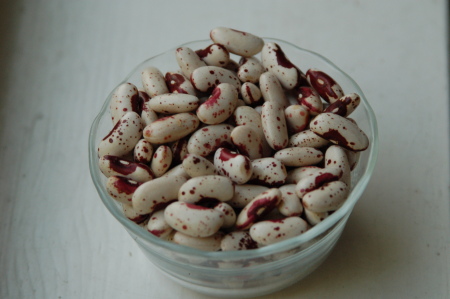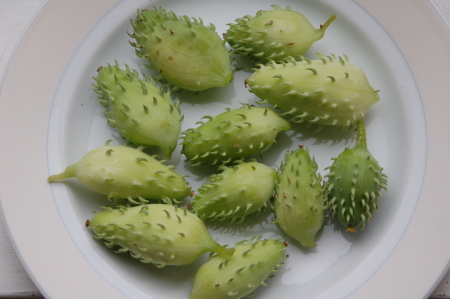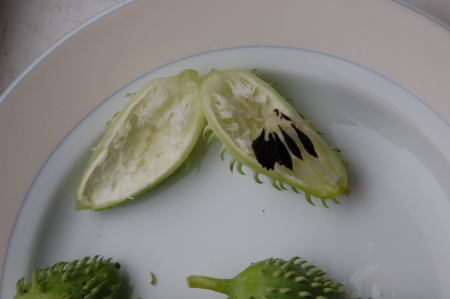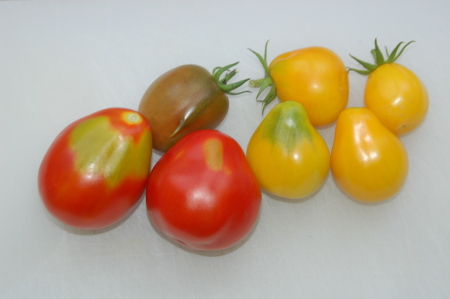
I had a pretty good crop of Dog Beans this year. We had several large servings of the green beans, and I guess I ended up with a kilo or two of dried beans. This is really a good tasting bean, both dried and green, and the plants are among the most prolific of any bean I have ever seen.
If you want to see something strange, have a look at Jardim con Gatos, he grew exactly the same beans (I sent him some of my seeds), but in his garden the colors reversed. Where my beans are red, his are white, and vis-versa. I’ve never seen a color reversal in these beans before (but this is common in some other beans). He also didn’t get any beans with the same color pattern as mine.
I’ve been growing these off and on for a couple of years now, and honestly I’ve never noticed any germination problems. That is until now. It’s possible I’ve just gone back and planted some more seeds when I noticed seeds weren’t germinating, because I do this with beans sometimes.
Before starting the year I germination tested them, as I was going to give some away to other people, they were a couple of years old, and I wanted to be sure they were still good. The results of the germination test were 100% out of 30 seeds or so. Hard to get much better than that, I thought.
Everyone I sent the seeds to reported poor germination. I also got poor germination rates in my garden this year. I thought this was because the seeds I had were old, so I replanted some of the seeds I saved this year. Guess what? Poor germination again. I even dug up some of the seeds to verify they weren’t eaten by a mouse or something, and they all seemed to be in the ground still.
If you are willing to go back and replant some of the seeds that don’t germinate, or sow heavily and thin, it’s still a great bean. I wonder what it is about being genetically predisposed to poor germination, that doesn’t go away on it’s own as the result of being selectively seed saved. Maybe it just needs a few more years of selection. Maybe I need to sprout them in a paper towel before I plant them.
I grew these beans as companion plants in a few places in my garden this year. This ended up working very well, because this variety is agressive enough to smother most weeds, but not so tall it gets in the way of many other garden plants growing.





